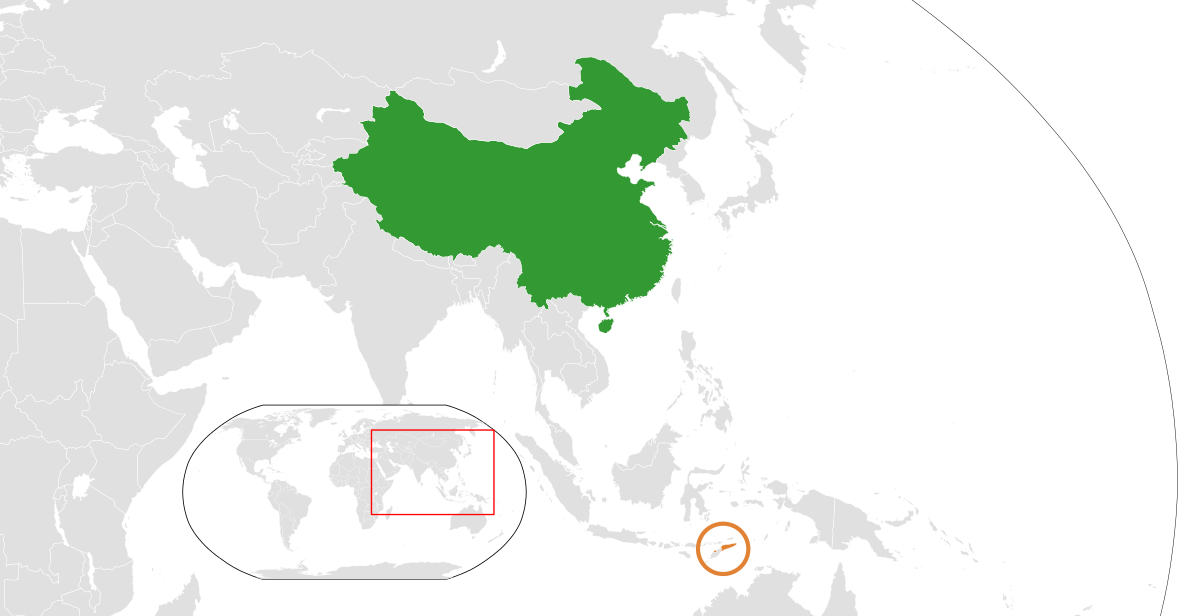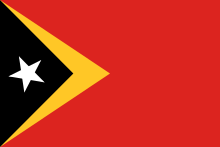Our weekly explainer series, China Ties, looks at China’s relationship with different countries of the world.
The tiny half-island nation of Timor-Leste has ruffled Australian feathers. The underdeveloped country is on Australia’s border, firmly under Australian hegemony. But in 2017, it signed up to the Belt and Road Initiative (BRI) and hosted Chinese warships in its ports. Former foreign minister Wáng Yì 王毅 visited in June 2022, a month after the Solomon Islands signed a security deal with the P.R.C. to harbor Chinese troops and warships. It led to fears of a political power-play by the P.R.C., some calling Timor-Leste “Australia’s Cuba.”
Originally a Portuguese trading enclave surrounded by Dutch Indonesia, it’s amazing Timor-Leste is a nation at all. It rapidly declared its independence in 1975 after Portugal withdrew, and then survived Indonesia rapidly invading and occupying it for the next 24 years, using torture, massacre, and starvation to keep people in line. Although never officially declared, academics agree the country suffered one of the major genocides of the 20th century.
Whereas Australia supported Indonesia’s annexation, the P.R.C. had Timor-Leste’s back, voting with the rest of the UN Security Council for Timor-Leste’s independence. China was also the first country to present its ambassador’s credentials when Timor-Leste became an independent nation again in 2002, and had already donated funds to help rebuild the country in 2000. China sent peacekeeping missions as part of UN efforts to rebuild, as Timor-Leste was crippled by retreating Indonesians bent on revenge. Even so, China’s grants and gifts in ensuing decades were small fry compared with Australia’s.
But trade and exchanges between the two are firmly on the up. Chinese companies are everywhere in the country, and the Chinese embassy to Singapore has claimed that during 2021, Timor-Leste’s exports to the P.R.C. increased by over 90 times. Meanwhile, teams of Chinese doctors have been shipped to Timor-Leste to help with the country’s serious lack of medical resources.
Democratic Republic of Timor-Leste
Founded: November 28, 1975
Population: 1.4 million
Government: Constitutional Democracy
Capital: Dili
Largest city: Dili
Established relations with the P.R.C.: May 20, 2002
Most Western focus on Chinese activity in Timor-Leste has been military cooperation and infrastructure projects. Chinese companies built the country’s presidential palace and foreign office, with Chinese government funding. Drawing from the wealth of its Petroleum Fund, Timor-Leste has a grand plan to get the nation on the road to long-term development by 2030, awarding three key building projects to Chinese companies:
There’s the national grid, offered in 2008 to the Chinese Nuclear Industry 22nd Construction Company (CNI22). It lost it by 2010, after consultants found CNI22 had poor safety and environmental standards, was behind schedule, lacked transparency, and only employed 155 Timorese workers, well below the government’s 20,000 target. But Timor-Leste still gives work to CNI22: The company has built other highways, and on June 4, 2022 — the same day as Wang Yi’s goodwill visit — CNI22 was re-awarded the contract to operate and maintain the grid for two years.
Second, there’s a highway in the south connecting Timor-Leste’s all-important oil refineries. China Overseas Engineering Group’s quote for the project was cheaper than a rival Australian contractor’s, but parts of the highway fell apart during its first rainy season in 2019, four months after completion.
Third, a massive container port near the capital. Some point to the involvement of a Chinese company as evidence the port, on Australia’s doorstep, could be used by the Chinese military — despite it being the subcontractor for the French company responsible for the project in the first place.
China news, weekly.
Sign up for The China Project’s weekly newsletter, our free roundup of the most important China stories.
The two countries do have military ties. In 2008, the PLA gave training to the Timorese coast guard and the navy bought two Chinese patrol boats. In 2016, three Chinese navy ships stopped to refuel in Dili, Timor-Leste’s capital. In 2017, the P.R.C. built them a $7 million new army HQ. These last two have been interpreted by Australian observers as provocation from Timor-Leste, a way of telling Australia it has options.
But these fears are overblown. As with aid, Australia is the bigger fish in this pond. They supplied the most soldiers — 1,300 — in a joint foreign intervention to put down an army coup in Timor-Leste in 2006, while China stayed well away. Australia provides advisers to both the army and the Ministry of Defense. Since 2017, the Australian government has been increasing its presence in the region, now offering Timor-Leste “long-term training” and joint patrols to “enhance maritime security.”
Timor-Leste is unlikely to sign a security deal with China. “Why would we?” President Ramos Horta told Sky News Australia after Wang Yi’s 2022 visit. “Australia remains our number one partner in defense and security, [and] in economics we have more daily engagements with Australia than we do with any other country.” To date, Timor-Leste hasn’t taken out loans with AIIB or the BRI, avoiding debt-trap scenarios.
But this could be a possibility in the future. The country faces economic decline due to a collapse in oil prices over the pandemic. Dwindling oil income could force Timor-Leste’s hand to make its dreams a reality — the government has been looking into taking out loans with AIIB since at least 2020. Horta told the Shangri-La Dialogue this year China is still “a magnet for disillusion with the West,” a welcome funding alternative to balance the West’s shortcomings.
The question is whether Chinese funding is worth it. In 2021, local NGO La’o Hamutuk estimated that China’s total aid to Timor-Leste was around 3% of aid received by that time — claiming almost all had gone to Chinese workers and companies working in the country. It noticed the country had an annual trade deficit with China of around $114 million, and since 2002 had paid Chinese companies for its infrastructure projects 15 times the amount of aid China had sent. It’s unclear if the multiple new agreements Timor-Leste signed during Wang Yi’s visit redress this.
For now, Horta keeps goodwill with both China and Australia to further Timor-Leste’s best interests.








